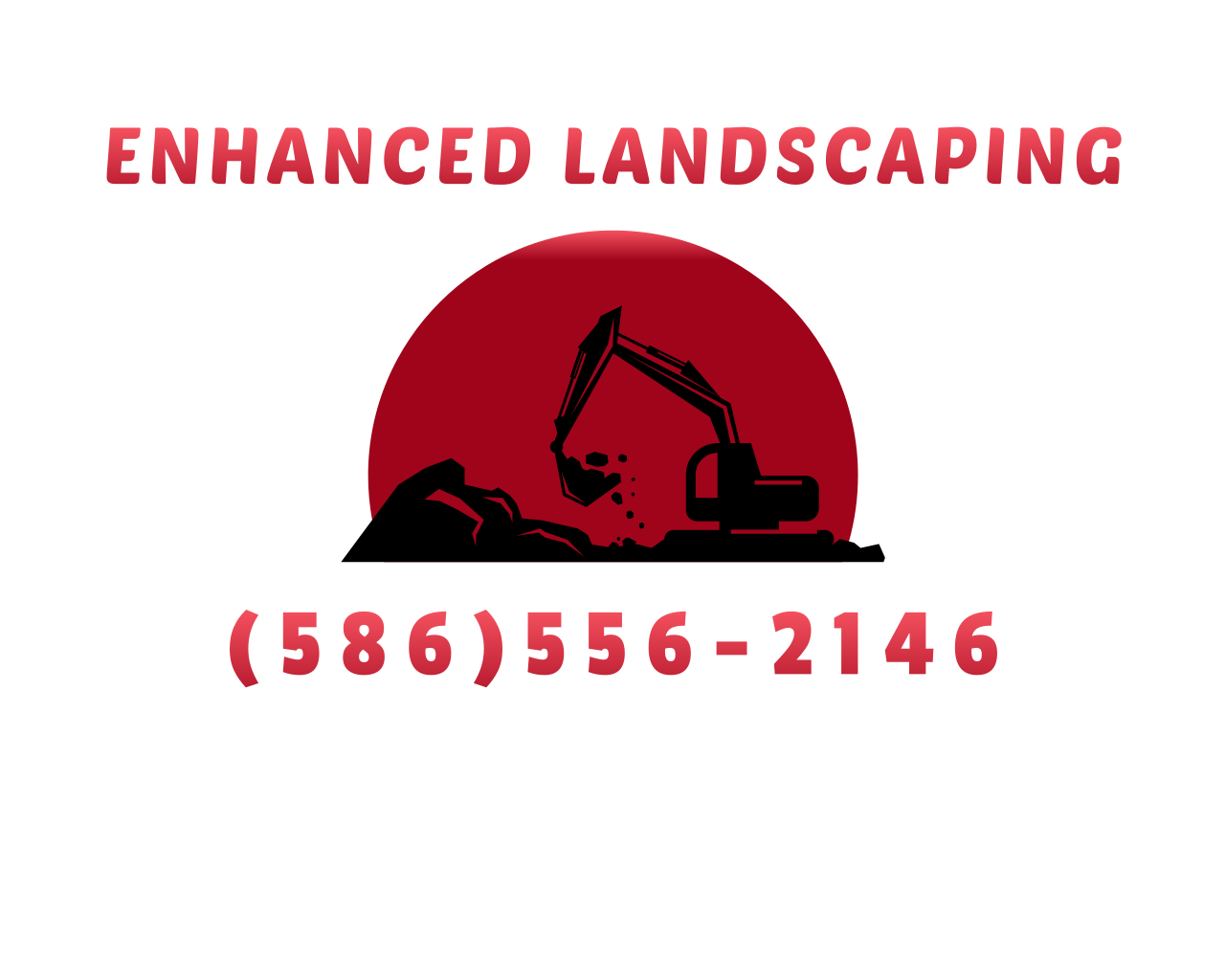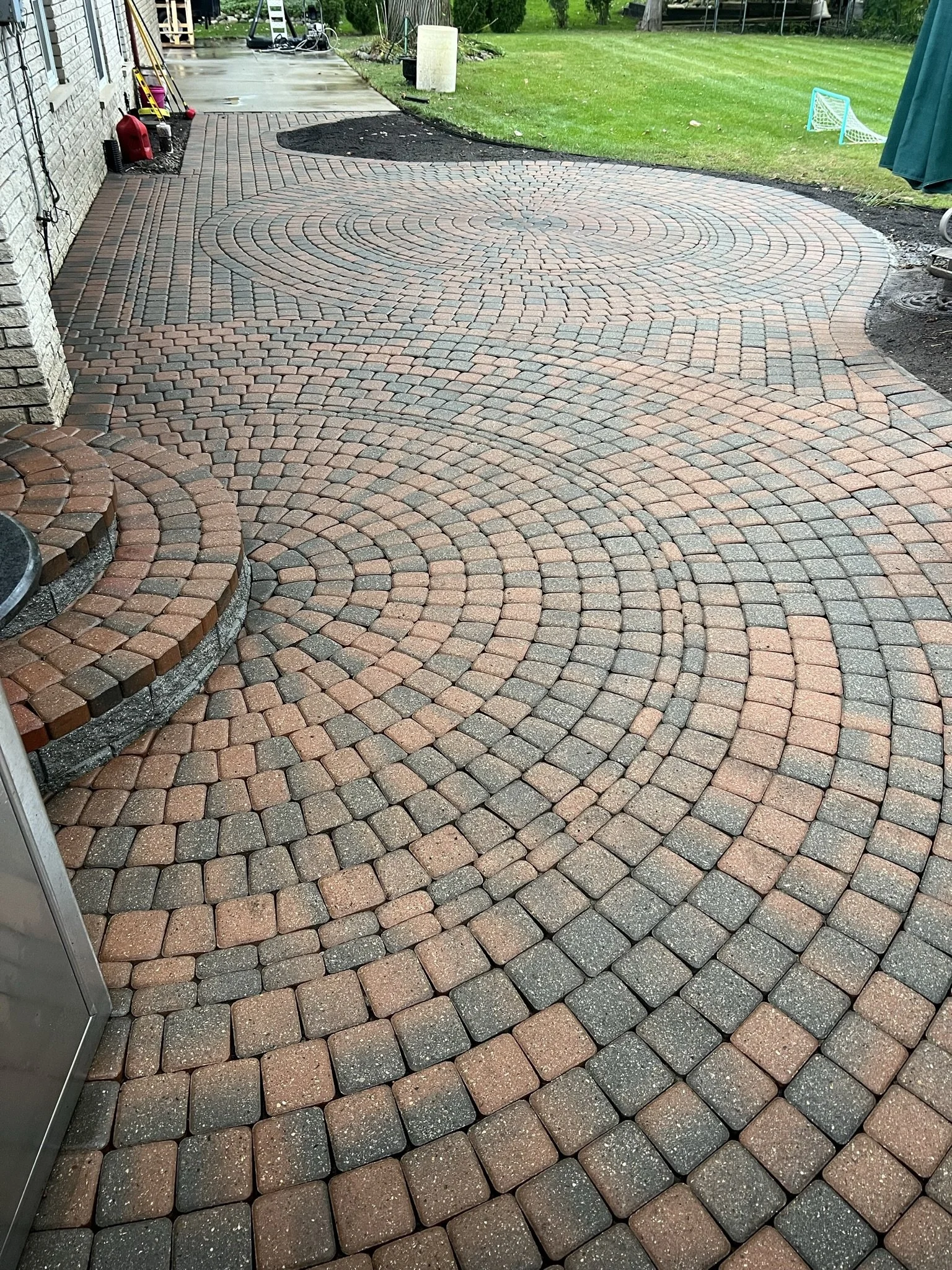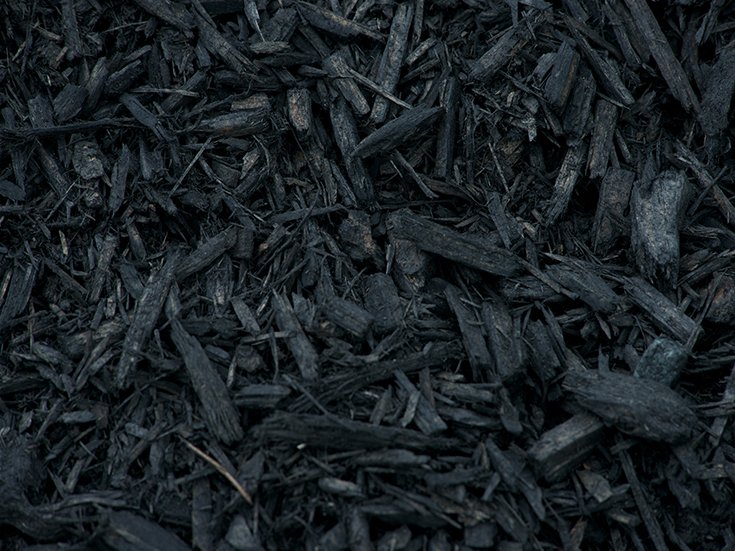Paver Construction process
-
- The first step in any project is excavation of grass and top soil the depth will depend on two factors:
Soil Type - Clay soil requires deeper excavation: sandy soil requires less
Use - Heavy loads like driveways a d retaining walls require deeper excavation a minimum of 12 inches of base material ; lighter loads like patios and walkways require less between 6-8 inches of base material.
depth of excavation can be reduced significantly If a layer of drive grid is placed at the bottom of the excavation before.
-
-the excavated area will be filled with a gravel base this gravel base needs to be:
Strong enough to handle the load of whatever is placed on the surface we use anywhere between 6-8 inches of 21AA crushed concrete.
Free draining so that water drains out of the base into the subsoil. Retaining walls may require a perforated drain pipe in the gravel base to direct water away from the base of the wall.
Extended at least six inches beyond the edge of the finished paver surface
compacted in several layers, using the proper equipment
-
layer of sand or stone dust is spread out and smoothed on top of the solid gravel base. This layer allows paver or wall units to be leveled or sloped for smoothness and drainage.
-
For pavers, an edge restraint will be secured with long metal spikes or a concrete edge will be installed to prevent perimeter pavers from drifting out. For walls, glue may be used to secure rows of blocks. Larger retaining walls may require geogrid every few layers to secure the wall into the soil that is being retained
-
The color you choose for joint material impacts the overall aesthetic. it also plays an important role between pavers by keeping out weeds and other debris. your contractor can help you decide which joint material is right for your project. (There are two types of joint material to choose from)
Basic Jointing sand - Years ago, this was the only joint material available. as it wears away, issues with weeds could arise. if you choose a basic sand, we recommend that you use a joint stabilizing sealer and be prepared to replenish the sand when needed
Polymeric Sand - This special sand stays in place longer because it is combined with a binding agent. However, it’s not right for every project and needs to be installed with care to prevent hazing
-
Some homeowners choose to apply a sealer to enhance the color of the pavers, while others choose to appreciate the color of the pavers as they age. some unilock pavers are sold factory sealed. if you choose to seal, you should plan to reseal every 3-5 years
Factory sealed products
Elegance Pavers and unilock pavers manufactured with “Easy Clean” have been pre sealed in the factory and do not require sealing after installation. to clean and brighten the surface at any time, a gentle power washing of the surface is recommended. if you still wish to reseal the surface, you must wait a minimum of 3 years before applying sealer. Only use solvent-based sealers
Protecting your investment!
plan to clean and reseal them every three to five years. Clean your pavers each Spring with a coarse-bristle “stable” broom and a paver cleaner to keep them looking like new. Some weeds, if left unaddressed, can shift pavers apart over time.
pressure washing can restore the appearance of your pavers in no time. Pressure washing can quickly and effectively blast away all the dirt, dust, grime, and debris on your pavers. High-pressure water is powerful enough so you don't even need to use cleaning solutions or chemicals.





